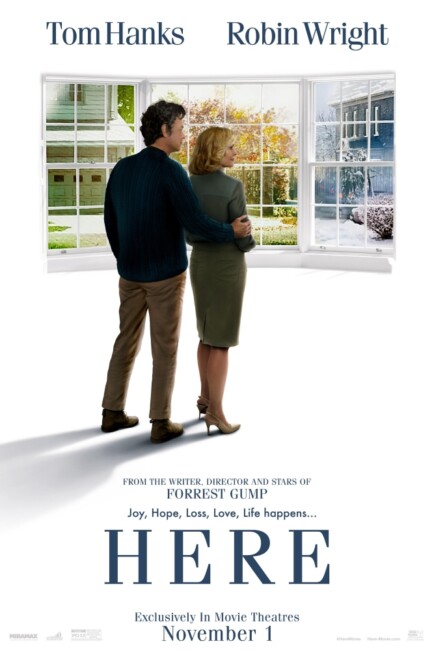USA. 2024.
Crew
Director – Robert Zemeckis, Screenplay – Eric Roth & Robert Zemeckis, Based on the Graphic Novel Here (1989, 2014) by Richard McGuire, Producers – Bill Block, Derek Hogue, Jack Rapke & Robert Zemeckis, Photography – Don Burgess, Music – Alan Silvestri, Visual Effects Supervisor – Kevin Baillie, A.I. De-Aging – Metaphysic (Supervisor – Jo Plaete), Visual Effects – DNeg (Supervisor – Johnny Gibson), Special Effects Supervisor – Luke Murphy, Prosthetics Designer – Nik Williams, Production Design – Ashley Lamont. Production Company – Miramax/ImageMovers.
Cast
Tom Hanks (Richard Young), Robin Wright (Margaret Young), Paul Bettany (Al Young), Kelly Reilly (Rose Young), David Fynn (Leo Beekman), Ophelia Lovibond (Stella Beekman), Lauren McQueen (Elizabeth Young), Harry Marcus (Jimmy Young), Zsa Zsa Zemeckis (Vanessa Young), Michelle Dockery (Pauline Harter), Gwilym Lee (John Harter), Nicholas Pinnock (Devon Harris), Nikki Amuka-Bird (Helen Harris), Anya Marco-Harris (Racquel), Joel Oulette (Indigenous Man), Danne McCallum (Indigenous Woman), Ellis Grunsell, Finn Guegan, Callum McGreadie & Teddy Russell (Young Richard), Beau Gadsdon, Billie Gadsdon, Lyra Grace & Jemima MacIntyre (Young Elizabeth), Logan Challis, Albie Salter & Diego Scott (Young Jimmy), Elodie Crapper, Eliza Daley, Faith Delaney, Eloise Ferreira & Albie Mander (Young Vanessa), Angus Wright (Gilbert Moore), Keith Bartlett (Benjamin Franklin), Daniel Betts (William Franklin), Delilah O’Riordan (Violin Girl)
Plot
The story of a single room in a house in Pennsylvania throughout history. The story ranges from prehistory to when the land was inhabited by Native Indians to when Benjamin Franklin built a house across the road in the 18th Century. With the construction of the house, its first owners were the Harters around the turn of the 20th Century. In the 1940s, the house was brought by Leo and Sylvia Beekman where Leo went on to invent the Laz-Z-Boy chair. Following World War II, the house was brought by war veteran Al Young and his wife Rose who raised three children. In the 1960s, the teenage son Richard and his girlfriend Margaret became pregnant. They married, moved in and inherited the house as Al and Rose retired to Florida, before they grew into old age and divorced but later reconciled. In the present day, in the midst of the Covid pandemic, the house was brought by the Harris family.
Here is a graphic novel from US comic-boom artist Richard McGuire. McGuire originally published this as a six-page story Here (1989), which shows the same perspective of the same room throughout history from the prehistoric past to the near future. Each panel is given a year and within it there are various windows that pop up showing the same place at different eras in time. The original work was highly acclaimed and McGuire later expanded it into Here (2014), a 304 page graphic novel, taking in the same view ranging from prehistoric Earth before life began to 22 thousand years in the future. While various lives are covered, there are no individual characters apart from one figure named Richard, who is coincidentally born the same year and lives in the same area that Richard McGuire was.
Enter Robert Zemeckis. Zemeckis will always have two massive hits to his name – that of being the director of Back to the Future (1985) and of the award-winning Forrest Gump (1994). (See below for Zemeckis’s other genre works). Since the 1980s, Zemeckis has been a director who has constantly been pushing the envelope when it comes to the use of visual effects and harnessing digital technologies with works like Who Framed Roger Rabbit? (1988), Death Becomes Her (1992), Forrest Gump and Contact (1997). Since the early 2000s, Zemeckis has come to specialise in films using motion-capture animation with the likes of The Polar Express (2004), Beowulf (2007) and A Christmas Carol (2009) or integrated with live-action as in Welcome to Marwen (2018) and Pinocchio (2022).
Zemeckis had difficulty persuading any studio to take on his planned adaptation of Here. He and Tom Hanks took the step of holding an auction for the rights, which raised an estimated $50 million budget, most of it coming from the post-Weinstein Miramax. Despite taking place in the US, the film was actually shot in the UK with Zemeckis and his effects team employing innovative A.I. techniques to de-age Tom Hanks and Robin Wright. Released, the film fared poorly, earning only $13 million worldwide at the box-office and receiving very mixed reviews.
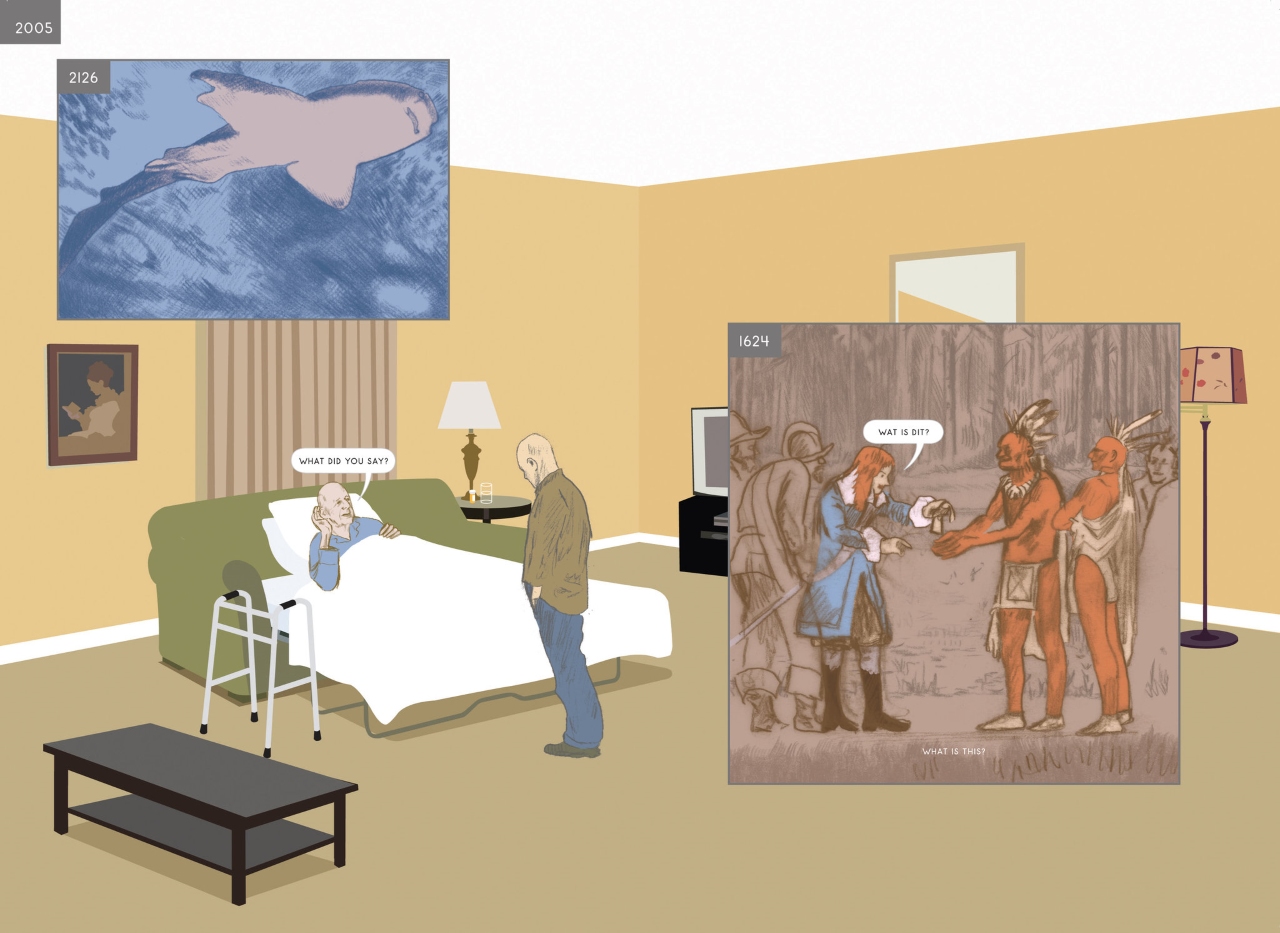
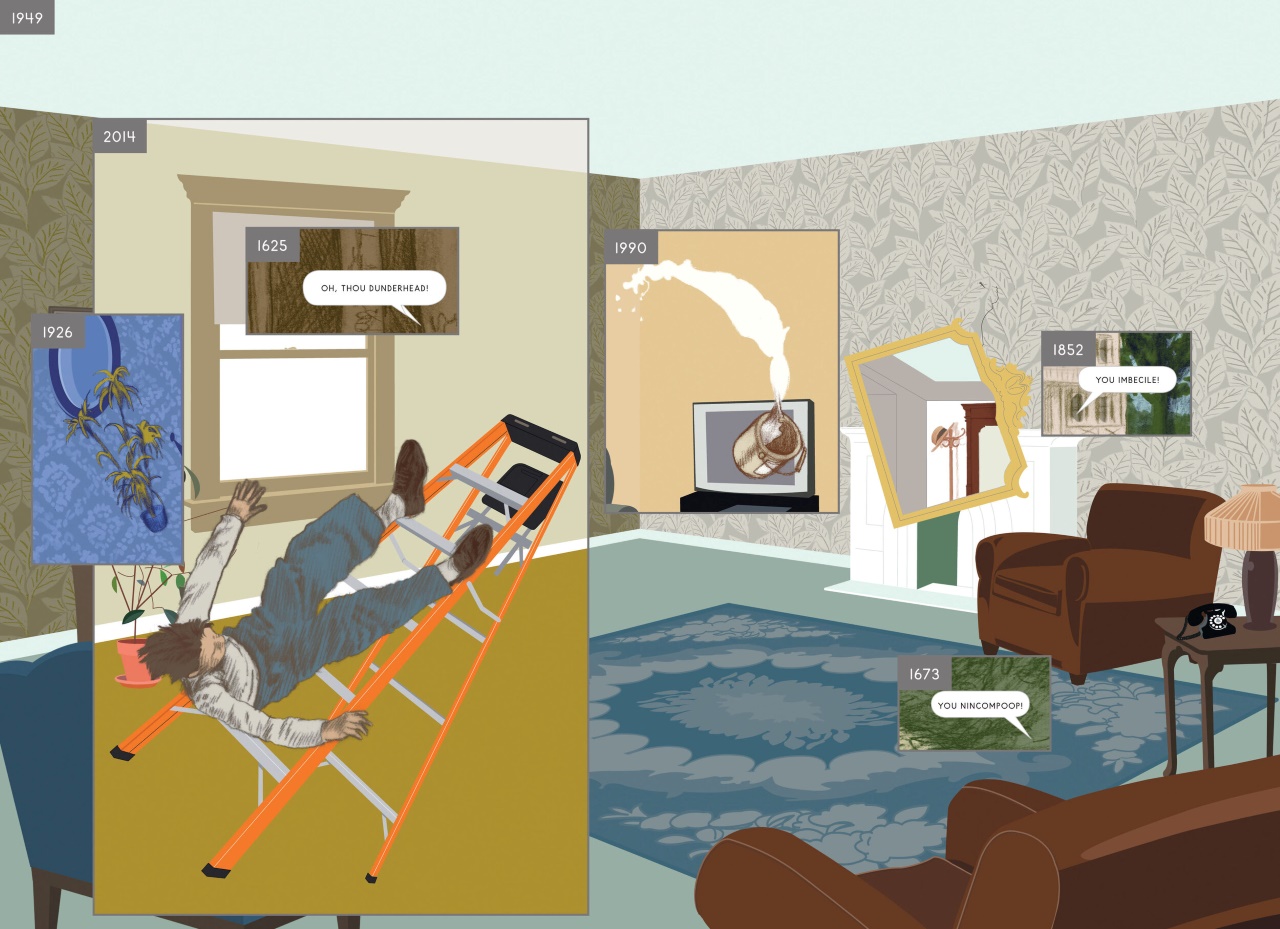
Whatever way you look at it, Here is the biggest budgeted experimental film ever made. Normally experimental films are a novelty – a film that tries out a certain effect or novelty style such as shooting everything in negative. The nearest equivalent to Here might be some of the films of Andy Warhol such as Eat (1964), Sleep (1964) and Empire (1965) or Michael Snow’s Wavelength (1967) or La Region Centrale (1971), which are films that are often single long shots focused on a place or person – a zoom across a room that lasts 45 minutes in Wavelength, or in the case of Warhol’s Empire, an eight-hour long stationary view of the Empire State Building.
What should be noted about experimental films such as these is that they are usually novelty effects. You watch them to see what the effect is like but not for entertainment value ie. rarely are they works that you ever revisit or go back to see again. There is something of that to Here. The film is just the camera staying in a fixed position looking across a room (or the terrain before the house was built) as various windows pop up and merge in and out on various eras of its occupancy. The only point that Zemeckis breaks that single point-of-view is during the final shot when the camera turns around to show us the side of the room where we have been viewing everything from and then moves to cross the room and pull back out across the neighbourhood.
To make the film a more dramatic one, Zemeckis and co-writer Eric Roth add characters to it. We see various vignettes of an Indigenous couple, when Benjamin Franklin was living nearby in the 18th Century, the first owner around the turn of the 20th Century who was obsessed with flight, the inventor who moved in after that, while the bulk of the story with that of the Young family and their children through to the sale of the house and its purchase by an African American family during Covid. Dropped has been McGuire’s taking the frame back before the dinosaurs and into the future after the house burned down and millennia beyond that. The idea of telling a Cross-Historical family saga and taking everything back to prehistory has many similarities to Terrence Malick’s The Tree of Life (2011). The crosscuts between the eras have some occasionally clever synchronicity – between the pipes in the ceiling flooding and the pregnant Robin Wright’s waters breaking, or between the burial of the indigenous woman and then a few scenes later the necklace she was wearing being uncovered as artifact by a team of archaeologists.
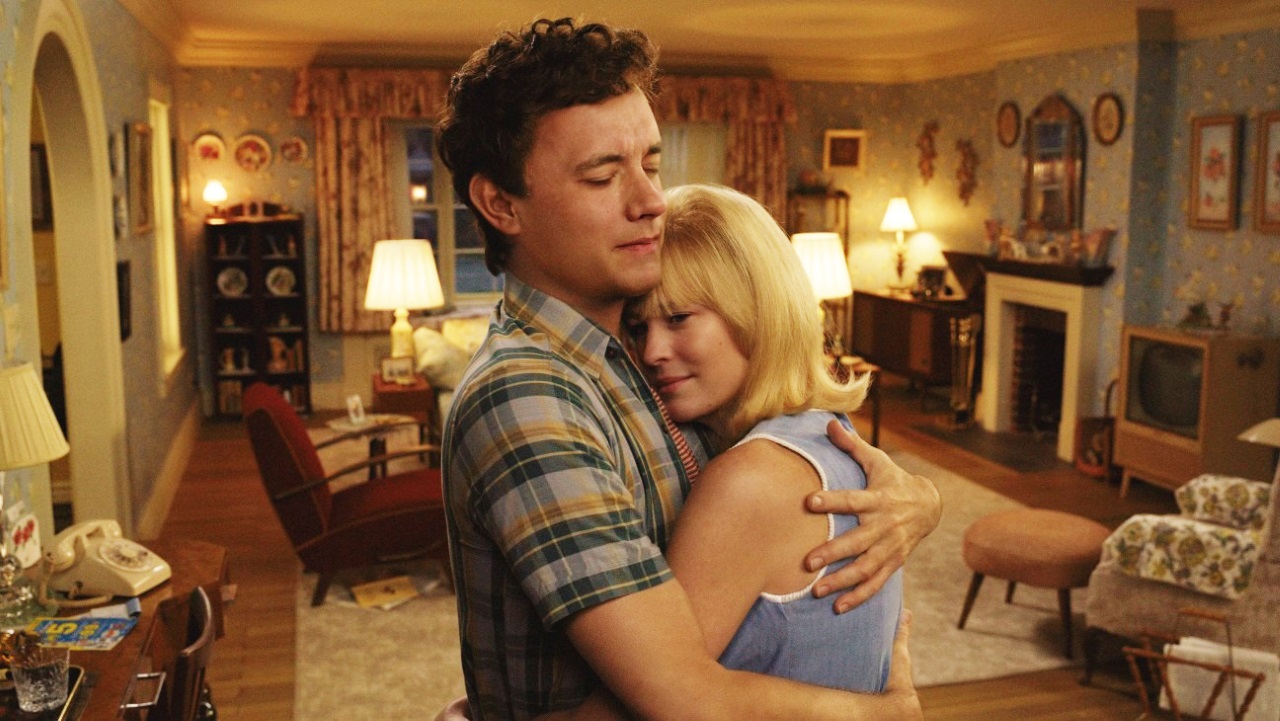
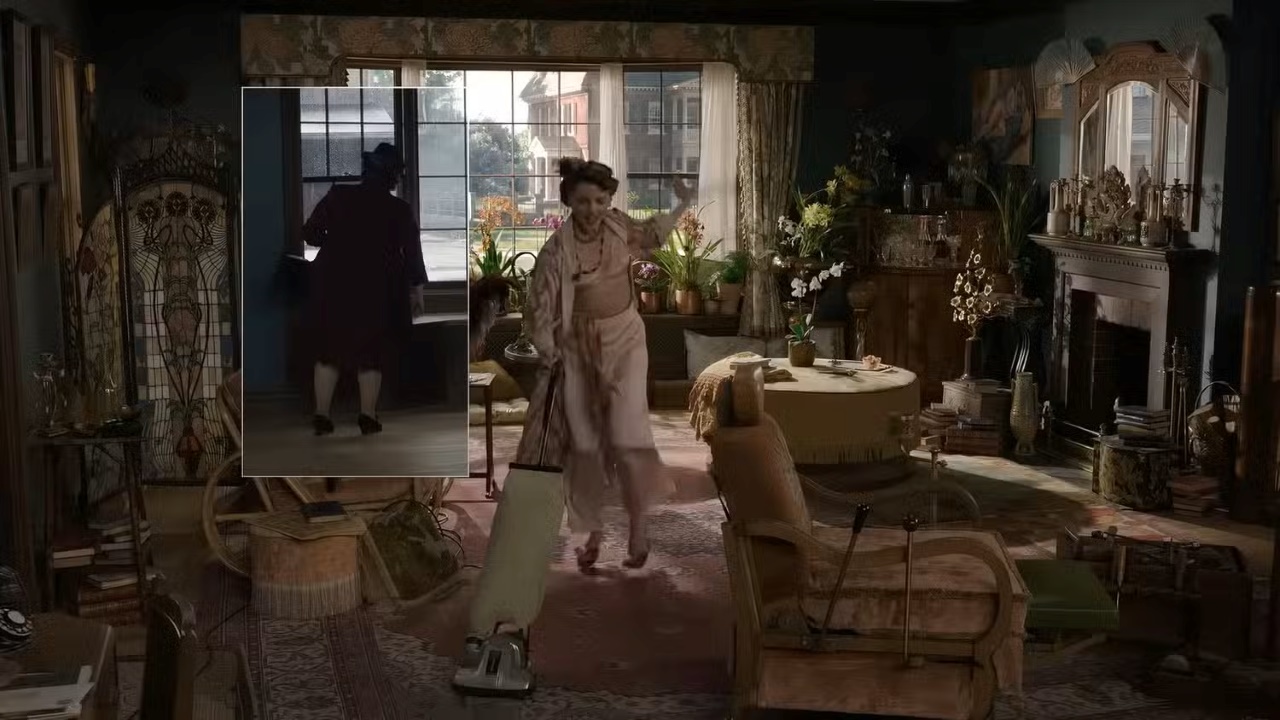
The point you could make about Here is that if you were to isolate all of the sections and place them in some kind of chronological order, it would make for a fairly dull and even at times sentimental family drama of no particular exception. Even the capsule synopsis “A generational story about families and the special place they inhabit, sharing in love, loss, laughter, and life” says nothing remarkable about the film. It is the unique narrative structure that makes the film. It is a film where you can say that it is Robert Zemeckis almost entirely absorbed with the innovative technical process – and no denying, what he achieves here is a phenomenal feat from a technical perspective – but almost entirely one where the technical novelty and experimental nature of the film eclipses any merit it has on the dramatic front.
Robert Zemeckis’s other films are:– I Wanna Hold Your Hand (1978), Used Cars (1980), Romancing the Stone (1984); his time travel trilogy Back to the Future (1985), Who Framed Roger Rabbit? (1988), Back to the Future Part II (1989) and Back to the Future Part III (1990), the immortality black comedy Death Becomes Her (1992), the alien contact film Contact (1997), the ghost story What Lies Beneath (2000), the computer-animated Christmas fantasy The Polar Express (2004), the computer-animated adaptations of Beowulf (2007) and A Christmas Carol (2009), Flight (2012), The Walk (2015), Allied (2016), the true-life based Welcome to Marwen (2018) where Steve Carell builds a fantasy village of dolls, the remake of The Witches (2020) and the live-action remake of Pinocchio (2022) . Zemeckis has also produced a large number of other genre films including the Tales from the Crypt (1989-96) cable tv horror anthology series, the two film spinoffs Tales from the Crypt Presents Demon Knight (1995) and Tales from the Crypt Presents Bordello of Blood (1996), Peter Jackson’s The Frighteners (1996), the voodoo film Ritual (2002), the the CGI-animated Monster House (2006) and Mars Needs Moms (2011), Real Steel (2011), the tv series’ Manifest (2018-22) about a planeload of temporally displaced passengers and Project Blue Book (2019-20) about the US Air Force’s true life UFO investigation department and the robot film Finch (2021). Zemeckis was also a producing partner in Dark Castle Entertainment, which have made a number of horror films including House on Haunted Hill (1999), Thir13een Ghosts (2001), Ghost Ship (2002), Gothika (2003), House of Wax (2005) and The Reaping (2007).
Eric Roth was Zemeckis’s writer on Forrest Gump (1994) and went onto other high-profile scripts including The Postman (1997), The Horse Whisperer (1998), The Insider (1999), Ali (2001), Munich (2005), The Good Shepherd (2006), The Curious Case of Benjamin Button (2008), Extremely Loud and Incredibly Close (2011), A Star is Born (2018), Dune: Part One (2021) and Killers of the Flower Moon (2023).
Trailer here


